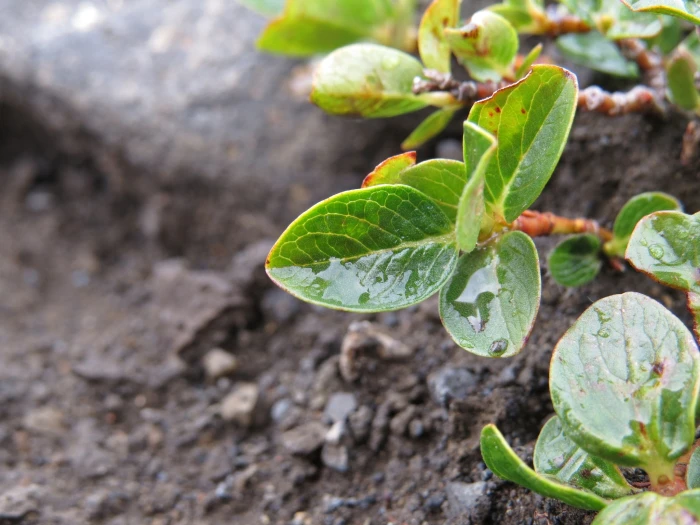Polar Willow
(Salix polaris)
Polar Willow (Salix polaris)
/
/

© Jack Bindernagel
CC BY 4.0
Image By:
© Jack Bindernagel
Recorded By:
Copyright:
CC BY 4.0
Copyright Notice:
Photo by: © Jack Bindernagel | License Type: CC BY 4.0 | License URL: http://creativecommons.org/licenses/by/4.0/ | Uploader: jbindernagel | Publisher: iNaturalist |

























Estimated Native Range
Climate Requirements for Paramount, California
| This Plant | Your Site | Plant Suitability for Your Location | ||
|---|---|---|---|---|
| • Precipitation | 4" - 184" | 14" | Your precipitation may be insufficient for this plant. Irrigate N" / year. | Irrigate N" / year |
| • High Temp. | 31°F - 79°F | 85°F | Your summers may be too hot for this plant. | Too hot |
| • Low Temp. | -53°F - 34°F | 45°F | OK, but your winter temperatures are warmer than normal for this plant | OK |
This plant should grow well at your location with about N inches per year (Y minutes per month) of irrigation.
Summary
Salix polaris, commonly known as Polar Willow, is a prostrate, creeping dwarf shrub that is part of the high arctic tundra’s unique flora. It is adapted to the extreme conditions of the circumpolar regions, extending north to the limits of land and south to alpine areas in Norway, the northern Ural Mountains, the northern Altay Mountains, Kamchatka, and British Columbia, Canada. This plant typically grows only 1-4 inches high and features underground branches or runners that spread within the uppermost soil layers. The leaves of Salix polaris are dark green, small, and adapted to the harsh, windy conditions of its native habitat.
The Polar Willow is dioecious, meaning it has separate male and female plants, with flowers grouped in short catkins that appear in the brief arctic summer. The flowers are not particularly showy but are critical for the local ecosystem, providing pollen and nectar for arctic insects. In cultivation, it is valued for its ability to form dense mats that stabilize soil and can be used in rock gardens or as ground cover in cold climates. It requires full sun to part shade, well-drained soil, and can tolerate the poor nutrient availability typical of its native habitat. While not commonly grown in gardens, it is of interest for ecological restoration projects and for study in botanical collections.CC BY-SA 4.0
The Polar Willow is dioecious, meaning it has separate male and female plants, with flowers grouped in short catkins that appear in the brief arctic summer. The flowers are not particularly showy but are critical for the local ecosystem, providing pollen and nectar for arctic insects. In cultivation, it is valued for its ability to form dense mats that stabilize soil and can be used in rock gardens or as ground cover in cold climates. It requires full sun to part shade, well-drained soil, and can tolerate the poor nutrient availability typical of its native habitat. While not commonly grown in gardens, it is of interest for ecological restoration projects and for study in botanical collections.CC BY-SA 4.0
Plant Description
- Plant Type: Shrub
- Height: 0.1-0.5 feet
- Width: 0.5-1 feet
- Growth Rate: Moderate
- Flower Color: N/A
- Flowering Season: Spring, Summer
- Leaf Retention: Deciduous
Growth Requirements
- Sun: Full Sun, Part Shade
- Water: Medium
- Drainage: Fast, Medium
Common Uses
Erosion Control, Low Maintenance, Rock Garden
Natural Habitat
High arctic tundra and alpine areas in circumpolar regions
Other Names
Common Names: Polarweide, Arctic Willow
Scientific Names: Salix polaris, Salix herbacea, Salix polaris subsp. glabrata, Salix polaris subsp. pseudopolaris, Salix polaris var. glabrata, Salix polaris var. selwynensis, Salix pseudopolaris
GBIF Accepted Name: Salix polaris